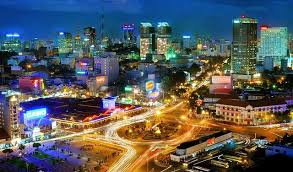Vietnamese economy may expand 6.8% in 2021: WB
VGP – Viet Nam’s good economic performance comes from the resilience of both domestic economy and foreign trade.
 |
|
Viet Nam’s good economic performance comes from the resilience of both domestic economy and foreign trade |
“This projection assumes that the Covid-19 crisis will be brought under control, notably through the introduction of an effective vaccine,” noted the World Bank at the launch of its latest economic update report for Viet Nam titled “Taking Stock” on December 21.
The external sector-the main driver of economic growth in Viet Nam over the past decade-has performed exceptionally well since the beginning of the COVID-19 crisis.
The country is on the verge of reporting not only its highest merchandise trade surplus ever but also an increase in international reserves. The continued inflows of foreign investment and the steady rise in merchandise exports more than compensated for the losses in foreign exchange earnings from decreased tourism activities and shrinking remittances, according to the report.
In addition, the WB attributes Viet Nam's economic performance to the resilience of both its domestic economy and the external sector.
Besides the containment of the pandemic by bold, early and innovative measures, the Vietnamese government has also used its fiscal and monetary policies to provide breathing space for the private sector and jump-start the recovery.
Besides, the external sector, the main driver of economic growth in Vietnam over the past decade, has performed exceptionally well since the beginning of the COVID-19 crisis.
The report also suggests that foreign investors have continued investing and/or shifting production activities to Vietnam due to the country’s good management of the pandemic.
“Viet Nam is standing at a crossroads of post-COVID-19 recovery. It has an opportunity to set itself on a greener, smarter, and more inclusive development path that will bolster resilience to future shocks from both pandemics and climate-related disasters,” said Carolyn Turk, World Bank Country Director for Viet Nam. “The authorities must tackle the environmental and climate challenges with the same sense of urgency as they have done with COVID-19 because the costs of inaction are already visible and will become increasingly irreversible. The recent tropical storms in Viet Nam’s central region and rising air pollution in the country’s major cities are good illustration of this fragility.”
The report says that whether Viet Nam can fulfill its desire to become a high income economy by 2045 will depend not only on its ability to overcome the COVID-19 crisis but also on its effective management of resources and clime risks.
By Vien Nhu

